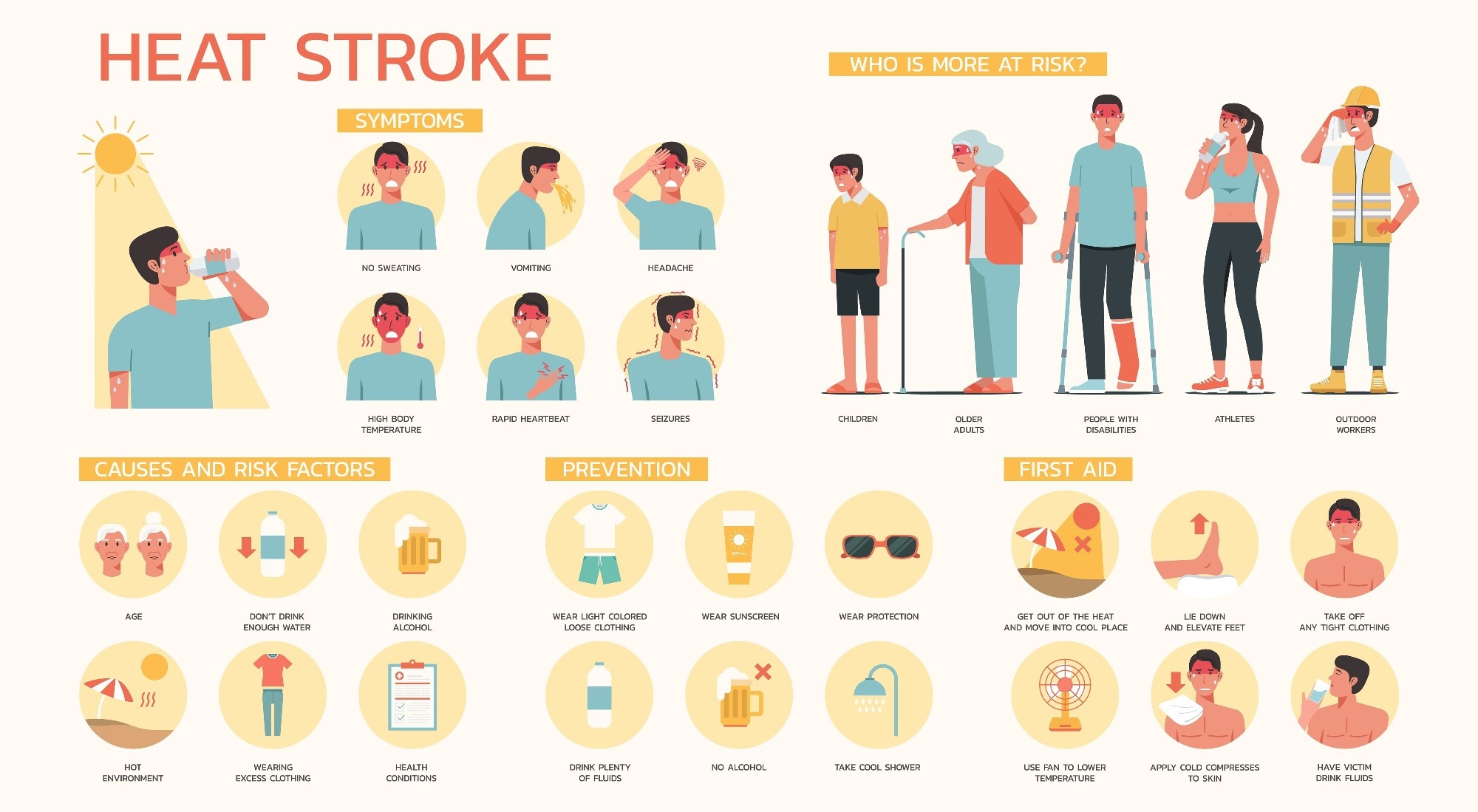Scientists have anticipated a rise in the frequency and intensity of climatic extremes. Heat waves may overwhelm the physiological adaptation ability of some population groups. Hence, these alterations may have direct effects on public health.
 Heat-related illness. Image Credit: New Africa/Shutterstock.com
Heat-related illness. Image Credit: New Africa/Shutterstock.com
Heat-related illnesses occur when the body is subjected to high temperatures and high humidity for an extended period of time without enough cooling or hydration. This article will explain heat stress and its related illness.
What is heat stress?
The inability of the body to regulate its temperature properly leads to heat stress. Sweating is the body's normal method of self-cooling, but there are instances when it is not enough, and the temperature continues to rise.
Heat stress happens when the body's temperature increases too quickly, the sweating process breaks down, and the body has no other way to cool down. Body temperature may reach 106 degrees Fahrenheit or higher in as little as 10 to 15 minutes during a heat stroke. Without prompt medical attention, heat stroke may result in irreversible disability or death.
Vulnerable people to heat-related illnesses
Heat-related illnesses may affect everyone but the following are the most prone to its occurrence: The elderly, especially those who live in isolation or without air conditioning; young children and infants; pregnant women; nursing moms; those who suffer from serious bodily ailments, such as heart disease, high blood pressure or lung conditions; and individuals being treated medically for mental illness.
Heat stress affects the elderly more than the young because their bodies are less able to adapt to extreme heat or cold. They also have a higher prevalence of chronic health problems and are more likely to be taking medications that may alter the way the body handles heat.
 Heat stroke symptoms, causes and risk factors. Image Credit: ST.art/Shutterstock.com
Heat stroke symptoms, causes and risk factors. Image Credit: ST.art/Shutterstock.com
Causes of heat stress
Heat stress and heat-related illnesses may be caused by a wide variety of circumstances. These circumstances are explained in this section.
Dehydration
To maintain good health, the ideal core body temperature for humans is between 36 and 37 degrees Celsius. Sweating is the body's primary method of heat dissipation, often accounting for up to 80% of total heat loss. Dehydration prevents sweating; therefore, a person's core temperature continues to rise even while they exert themselves.
Poor ventilation
Heat stress can be caused by working in hot, confined and poorly ventilated areas.
Sunlight exposure
Continuous working while being exposed to the sun causes heat stroke and other related illnesses.
Hot weather and congestion
Heat stress may also be dangerous for persons who attend major events (concerts, dance parties, athletic events) in hot or crowded situations.
Bushfires
The fast loss of body fluids and the development of heat exhaustion may result from being exposed to the radiant heat of bushfires.
Heat Stroke, Causes, Signs and Symptoms, Diagnosis and Treatment.
Heat-related illnesses
Identifying the symptoms of heat exhaustion and knowing how to treat it are both crucial. Heat-related illnesses include a wide range of symptoms. In infants, the number of wet diapers a baby or toddler has may decrease, and they may exhibit indications of agitation or irritation. Lightheadedness, confusion, weakness, and fainting are common among the elderly.
The most common heat-related illnesses and symptoms are explained in this section.
Heat cramps
The mildest manifestation of heat illness is heat cramps. Common examples of this condition include muscle aches and spasms. After exertion in high temperatures, the body may get dehydrated and suffer from these symptoms.
Heat exhaustion
Extreme heat causes heat exhaustion, which is more severe than heat cramps. This condition results from the body losing too much salt and water. It happens when fluid and salt losses are not adequately replaced during periods of high environmental heat and perspiration. When the body's cooling systems break down, heat exhaustion results. The condition might worsen into heat stroke if not treated timely and adequately.
Heat stroke
The most serious consequence of being overexposed to heat is heat stroke. This condition develops when the body's natural cooling mechanisms are unable to cope with very high temperatures. If the body no longer sweats, the skin may become dry. This is a medical emergency of the highest priority.
Conclusion
Heat cramps, heat exhaustion, and heatstroke are more likely to occur in those over the age of 60, those who are overweight, have high blood pressure, have pulmonary or cardiovascular disease, and diabetic patients.
Constant isolation, a lack of social interaction, and a lack of physical activity are further concerns. Physiological deficiencies in the control of body core temperature in hot situations contribute to this heightened sensitivity.
The best way to prevent heat sickness is for doctors to be well-versed in both the causes and treatments so that they can advise their patients who are at risk.
References
Further Reading
Last Updated: Jul 18, 2023